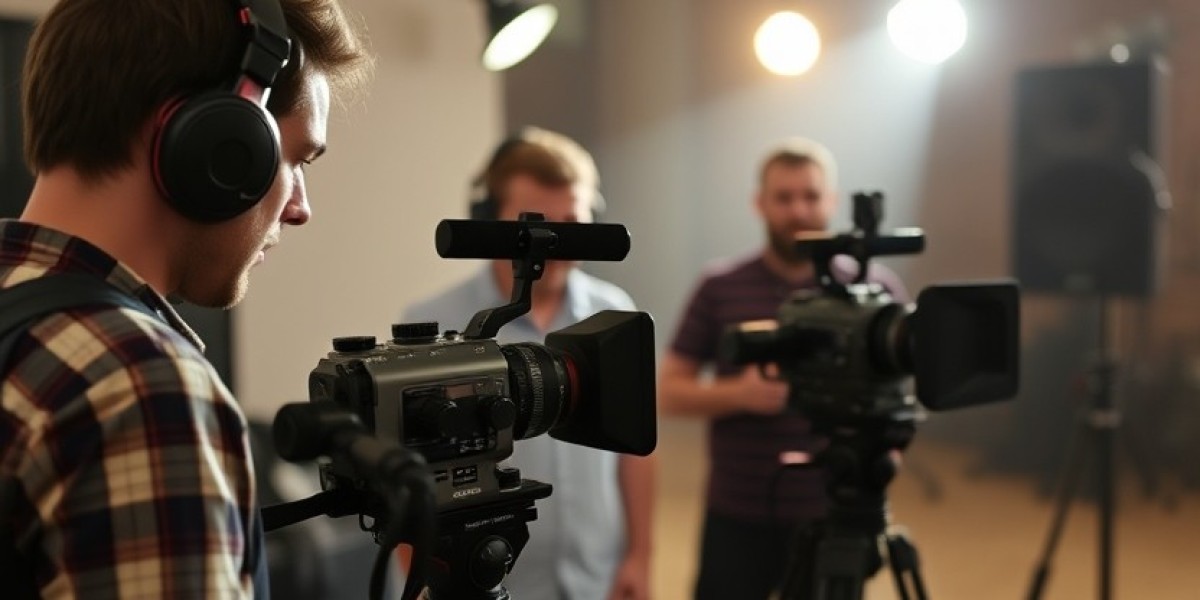In the world of professional audio-video (AV) production, having the right tools and equipment can make the difference between an amateur setup and a high-quality production. Whether you’re a seasoned professional or just starting out, this guide provides a comprehensive list of essential AV equipment to elevate your projects. Here are the top-rated tools for AV crew and crews, along with tips to help you build a successful setup.
1. Audio Tools for Video Crews
Must-Have AV Equipment for Sound Quality
- Wireless Microphone Systems: For flexibility and mobility, invest in reliable wireless microphone systems. They’re crucial for capturing clear dialogue without the clutter of cables. Look for models with long battery life and stable signal transmission to avoid disruptions during recording.
- Portable Audio Recording Equipment: Compact, high-quality audio recorders like Zoom H6 or Tascam DR-40X ensure you capture pristine sound in any environment. These devices often feature multiple input options for greater versatility.
- Pro Audio Tools and Gadgets: Tools like audio mixers and digital sound processors are essential for fine-tuning audio levels during production. A high-quality mixer allows for precise audio control, blending multiple channels seamlessly.
Recommended AV Equipment for Professionals
- Lapel Microphones: These are discreet yet effective tools for interviews and live events. Look for lapels with windshields to minimize ambient noise during outdoor shoots.
- Shotgun Microphones: Ideal for capturing directional sound while minimizing background noise. A good shotgun mic, such as the Sennheiser MKH 416, can significantly improve sound clarity.
- Audio Isolation Tools: Sound blankets and foam panels are perfect for controlling echo and external noise during recordings. These tools are especially important in home studios or makeshift recording spaces.
2. Video Production Essentials
Tools for Video Production Crews
- High-Quality Cameras: Investing in top-tier cameras like the Sony FX6 or Canon EOS R5 is crucial for producing sharp, professional-grade visuals. Cameras with interchangeable lenses provide more flexibility for different shooting scenarios.
- Camera Stabilization Tools: Gimbals, tripods, and sliders help create smooth, cinematic shots. These tools are part of every video crew’s gear checklist. Consider motorized gimbals for advanced motion control.
- Video Editing Software: Programs like Adobe Premiere Pro and Final Cut Pro are industry standards for post-production. DaVinci Resolve is another excellent option, especially for color grading.
Affordable AV Tools for Beginners
- Compact Action Cameras: Affordable options like GoPro HERO12 are great for capturing dynamic shots on a budget. They’re also durable and ideal for action or outdoor footage.
- Portable LED Lights: Essential for lighting small setups, these tools ensure proper exposure without breaking the bank. Many portable LEDs also come with adjustable brightness and color temperature settings.
- Entry-Level Lenses: Affordable lenses with versatile focal lengths, like a 50mm prime or wide-angle lens, can drastically improve video quality. Investing in lenses often yields better results than upgrading the camera body.
3. Lighting Tools for Video Production
Best Lighting Tools for AV Setups
- LED Lighting Kits: These are must-have AV equipment for creating well-lit scenes. Adjustable LEDs with color temperature control are versatile for various shooting conditions. Consider brands like Aputure and Godox for professional results.
- Ring Lights: Perfect for interviews, vlogging, or close-up shots. They’re especially useful for creating even, flattering light for on-camera talent.
- Softboxes: These diffuse light evenly, reducing harsh shadows and enhancing image quality. Pair them with adjustable stands for flexibility.
Compact Lighting Kits for AV Crews
For portability, consider lightweight options like the Aputure Amaran series, which deliver professional lighting in a compact form. Other options include bi-color or RGB lights for more creative control.
Advanced Lighting Techniques
- RGB Lights: These add color effects to your scenes, creating a cinematic look. Experiment with different hues to set the tone and mood.
- Lighting Gels: Use gels to modify color temperature or add creative color accents to your footage. They’re an inexpensive way to enhance your lighting setup.
- Practical Lighting: Incorporate natural or on-set light sources, like lamps or neon signs, to add depth and interest to your scenes.
4. Cable Management and Power Solutions
Video Crew Cable Management Solutions
- Cable Organizers: Keeping cables neatly managed with cable ties or organizers reduces clutter and minimizes tripping hazards on set. Velcro straps and cable sleeves are particularly effective for quick setups.
- Wireless Transmitters: These eliminate the need for long cable runs, improving efficiency during shoots. Wireless HDMI transmitters, for example, can simplify connections between cameras and monitors.
Power Tools for Successful Audio-Video Production
- Portable Battery Packs: Vital for outdoor shoots, they ensure uninterrupted power supply. Look for high-capacity power banks with multiple output ports for added convenience.
- Backup Power Generators: A reliable power source is critical for extended production sessions. Silent generators are preferable to avoid disrupting audio recordings.
- Power Distribution Boxes: These help manage multiple power sources on set, keeping equipment powered safely and efficiently. Consider models with surge protection to safeguard your gear.
5. Accessories to Upgrade Your AV Setup
Gear Guide for AV Crews
- Field Monitors: These provide a clearer view of your footage compared to camera screens, ensuring accurate framing and focus. Monitors with high brightness are particularly useful for outdoor shoots.
- Clapperboards: An old-school but indispensable tool for syncing audio and video during editing. Digital clapperboards can also display timecodes for better organization.
- Lens Filters: ND (Neutral Density) filters and polarizers can improve your footage by controlling light and reflections. They’re essential for shooting in bright conditions or managing glare.
- Camera Bags and Cases: Protect your investment with padded cases designed for your gear. Look for options with customizable compartments for better organization.
AV Equipment Buying Tips
- Always consider the durability and compatibility of gear with your existing setup.
- Look for tools with multi-functional features to get the best value for your investment.
- Check warranties and after-sales support, especially for expensive gear.
- Buy from reputable brands and trusted retailers to ensure quality and authenticity.
6. How to Choose AV Equipment
Choosing the right tools for your AV setup can be daunting. Here are a few tips:
- Focus on your specific production needs—do you need compact gear for travel or robust tools for studio work?
- Research reviews and ratings to find the top-rated tools for AV technicians.
- Start with affordable AV tools for beginners and upgrade as your needs grow.
- Test equipment before purchasing, if possible, to ensure it meets your expectations.
- Consider the scalability of your gear—choose equipment that can grow with your production requirements.
Conclusion
Building the perfect AV setup doesn’t have to be overwhelming. By following this gear guide for AV crews, you’ll be equipped with the best tools for high-quality AV production. From wireless microphone systems to portable lighting kits, these essentials will ensure your projects are professional and efficient. Whether you’re a novice or an experienced technician, these must-have AV equipment recommendations will elevate your craft.
Remember, the key to success is not just owning the right tools but knowing how to use them effectively. Keep your gear organized, stay updated with the latest audio-video gear checklist, and invest in quality equipment to achieve seamless productions every time.
Finally, don’t underestimate the importance of continuous learning. Stay informed about emerging technologies and trends in the AV industry to maintain a competitive edge. Join online forums, attend workshops, and network with other professionals to expand your knowledge. With dedication and the right tools, you’re well on your way to mastering the art of audio-video production.



